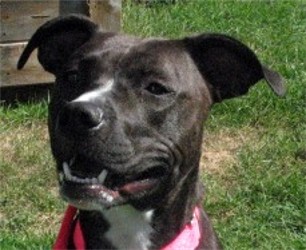Child's Play
Karla Schultz
Play behavior in the domestic dog
What is play?
One of the more controversial areas of behavioral science is the definition of play. Since the behavior seems so imbibed with emotions, it is very tricky to discuss play without toeing the line of anthropomorphism.
Play behavior in the domestic dog is very familiar to anyone who has interacted with a dog or seen several friendly canines having a "playdate." In this website, I attempt to tackle a basic, scientific overview of the nature of dog play.
To appreciate the difficulty scientists have had in discussing play behavior, take a look at these two fairly complicated definitions of play:
-Beach, 1945 [4]
"Play behavior must:
1. carries with it an emotional element of pleasure, therefore it is construed to be a form of affect;
2. is regarded usually as characteristic of the immature animal rather than the adult. It occurs earlier in the lifespan thus providing a foundation from which to grow and evelop adult-like behavior;
3. is customarily regarded as nonutilitarian, having no relatively immediate biological influence affecting contunued existence of individual species. It is nonproductive and not related to needs of survival;
4. the outward form is relatively species specific. Each creature plays out of its own repertroir. Puppy play does not have a human version;
5. the amount, duration, and diversity of play in a given species is related to its phylogenetic position. Apparently the higher in the evolutionary scale, the greater the diversity of behaviors which are playful and the greater the range of involvement in play."
another, "simpler" definition:
-Piaget, 1962 [4]
separating non-play from play,
"1. play as an end in itself;
2. it is spontaneous;
3. it is pleasure;
4. it is relatively lacking in oranization;
5. it is marked by freedom from conflicts;
6. it is overmotivated."
What does domestic dog play behavior look like? Here's a primer on its structure.